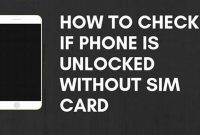If you’re feeling stuck with your current cell phone carrier, you are not alone. Switching your phone to a new carrier can be an overwhelming process, but it doesn’t have to be. With a little bit of preparation, the process can be easily managed, making it possible for you to enjoy better service, lower prices, and the latest technology. In this article, we’ll walk you through the steps to switch your phone to a different carrier so you can make the transition smoothly.

What is Carrier Switching?
Carrier switching, also known as porting or transferring, is the process of moving your phone number and plan from one mobile service provider to a different one. This can be done for various reasons such as saving money on monthly phone bills or getting better network coverage. When you switch carriers, you don’t need to change your phone number or buy a new phone unless you want to upgrade your device.
Why Switch Carriers?
There are several reasons why you might want to switch carriers:
- You are unhappy with your current phone plan
- You are moving to an area with poor network coverage
- You want to save money on your phone bill
- You want better features or perks such as a free subscription to music or video streaming services
Regardless of the reason, carrier switching can be a simple and straightforward process as long as you follow the necessary steps.
What are the Benefits of Switching Carriers?
Switching to a different carrier might give you access to new and better services and features, better coverage, cheaper plans, and better customer service. Here are some benefits to consider when you switch your phone carrier:
New and Better Services and Features
When you switch carriers, you can take advantage of new and better services and features. Maybe your current carrier does not offer the latest smartphones or a suitable data plan for your needs. By switching, you can discover new features and services that will significantly improve your mobile phone experience. Some carriers even offer free or discounted subscriptions to popular apps and services such as music streaming services, cloud storage, and video content platforms.
Better Coverage
If your current carrier does not provide adequate coverage in your area, switching to a different carrier may be the answer. Before switching, check coverage maps to confirm that you will receive adequate signal strength and coverage in the areas you frequent. A carrier that offers reliable coverage in your area will ensure that you do not miss important messages or calls or have a frustrating phone experience. By switching carriers, you can have access to carrier networks that have better signal strength, video and audio quality, and faster internet speeds.
Cheaper Plans
Switching to a different carrier can also ensure that you pay less for the same or better services. Shop around and compare the cost of the data plans for each carrier. You may find that you can get an equivalent plan from another carrier for less money. Often, smaller carriers offer more discounts and promotions, so it is essential to compare before making a switch. Bundle discounts on services such as TV, internet, and phone services can also help you save money.
Better Customer Service
If you have had bad experiences with customer service from your current carrier, switching to a different carrier may be the solution. Many networks provide exceptional customer support, with online chat, email, and phone support available around the clock. You want a carrier that will respond to your queries fast and efficiently. By switching carriers, you can have the peace of mind that comes from knowing you are getting excellent customer support.
Can You Keep Your Current Phone Number?
If you are thinking of switching carriers, you might be wondering if you can keep your current phone number. The answer is yes! All you need to do is request a porting of your phone number from your current carrier to your new carrier.
How Does Number Porting Work?
Number porting is a process that allows you to keep your phone number when you switch to a new carrier. When you request a port, your new carrier will work with your old carrier to transfer your existing phone number to your new account. This process typically takes no more than a few hours, although it can take longer in some cases.
It is important to note that you will need to provide some information to your new carrier, such as your account number and PIN, in order to initiate the porting process. Be sure to have this information before you start the process.
What Happens to Your Old Account?
When you switch carriers, your old account will be closed. You will need to settle any outstanding balances with your old carrier, and you may also need to return any equipment that you leased or purchased from them.
It is important to make sure that you do not cancel your old account before the porting process is complete. If you do, you may lose your phone number permanently.
What About International Numbers?
If you have an international phone number, the porting process may be more complicated. You may need to work with your old carrier to get an international unlock code, which will allow you to use your phone with a new carrier.
Be sure to check with your new carrier to see if they support international number porting before you begin the process.
What are the Steps to Switching Carriers?
Switching carriers can be a daunting task, but it doesn’t have to be. Here are the main steps to switch carriers with ease:
Research New Carriers and Plans
The first step to switching carriers is to research new carriers and plans. With so many options available, it’s important to take the time to find the carrier and plan that best fits your needs and budget. Consider factors such as coverage, price, and data limits when comparing carriers and plans.
Check Your Current Contract
Before making the switch, it’s important to check your current contract to avoid any penalties or fees. Many carriers require you to stay with them for a minimum period or pay a cancellation fee if you terminate your contract early. Check with your current carrier to see if you are eligible to switch without any fees.
Unlock Your Phone
If your current phone is locked to your carrier, you’ll need to unlock it before you can switch to a new carrier. Most carriers provide an unlock code upon request or once the minimum contract period has been met. If you’re unsure about whether your phone is unlocked or not, contact your current carrier to find out.
Obtain a New SIM Card
Once you’ve decided on a new carrier, you’ll need to obtain a new SIM card. This small card is what allows your phone to connect to the carrier’s network. You can usually order a new SIM card online or through the carrier’s customer service. Once you receive the new SIM card, follow the instructions to activate it.
Making the Switch
After obtaining a new SIM card and unlocking your phone, it’s time to make the switch. Insert the new SIM card, and follow the setup instructions provided by the new carrier. This may include setting up a new account, transferring your contacts and data, and configuring your phone’s settings. Be sure to test your new service to ensure everything is working correctly.
Cancel Your Old Service
Once you’ve successfully switched carriers, don’t forget to cancel your old service. Contact your old carrier and inform them that you’re no longer using their service. Depending on your contract, you may need to return any equipment or pay a final bill. Make sure to follow all necessary steps to avoid any fees or penalties.
How Long Does a Carrier Switch Take?
Switching to a new carrier can be a complicated process that involves several steps such as canceling your existing plan, unlocking your phone, choosing a new carrier, and activating a new SIM card. The entire switching process may take several days to complete, but the actual period that you might experience a service disruption can vary between carriers and may range from a few hours to a day or two.
Factors That Affect the Length of Carrier Switching Process
The duration of service disruption during a carrier switch varies not only because of the carrier you’re moving to but also because of other factors that may impact the process. Here are some of the factors that can affect the length of the carrier switching process:
- Type of Switch: The type of switch you’re making, whether it’s from one prepaid carrier to another, from a prepaid carrier to a postpaid carrier, or from a postpaid carrier to a prepaid carrier, can influence the duration of the service disruption.
- Phone Compatibility: The compatibility of your phone with the carriers can also affect the length of the disruption, especially if you need to purchase a new SIM card or a new phone entirely.
- Completeness of Your Account: If you have an outstanding bill or an unfulfilled contract with your current carrier, the carrier may delay the process until you have cleared all the dues.
Keep in mind that regardless of the carrier you choose, you may experience a certain level of service interruption during the switch process. However, most carriers will work hard to ensure that this interruption is minimal and that you can get back to enjoying uninterrupted service as soon as possible.
What Are Some Common Issues When Switching Carriers?
Switching carriers might be necessary for a number of reasons. You may be looking for better coverage, a more affordable plan, or simply unhappy with your current service. However, the process of switching carriers is not always straightforward, and may come with some common issues.
Incorrect porting of a phone number
One of the biggest issues that people encounter when switching carriers is an incorrect porting of their phone number. This can happen when the transfer of your phone number doesn’t go as planned, and you’re left without the ability to receive or make calls until the issue is resolved.
Service disruptions
When you switch to a new carrier, there is often a brief period of time where your service is disrupted. Depending on the network, this can last anywhere from a few minutes to several hours. During this time, you won’t be able to use your phone for calls, texts, or data.
Incompatible devices
Another issue that can arise when switching carriers is incompatibility between your device and the new carrier’s network. This is especially true when switching from a CDMA network to a GSM network, or vice versa. Some carriers use different bands or frequencies, and your phone may not support them.
Hidden fees and charges
When shopping for a new carrier, it’s important to pay close attention to the fees and charges associated with the plan you’re considering. Some carriers may charge hidden fees that are not immediately apparent when signing up, and you could end up paying more than you anticipated.
Difficulty canceling your current plan
Canceling your current plan may seem like a simple process, but it can be surprisingly difficult. Some carriers have cancellation fees, while others require a certain amount of notice before you can cancel. Make sure you understand the terms of your current plan before attempting to switch carriers.
Loss of features
Finally, when switching carriers, you may lose certain features that you’ve come to rely on. This could include voicemail, call waiting, or text messaging. Make a list of the features that are important to you, and make sure that they are supported by the new carrier before making the switch.
Frequently Asked Questions
| Questions | Answers |
|---|---|
| Can I switch my phone to a different carrier? | Yes, you can switch your phone to a different carrier, as long as your phone is not locked to your current carrier and is compatible with the new carrier’s network. |
| What do I need to do to switch my phone to a different carrier? | You will need to contact the new carrier to make sure your phone is compatible with their network, purchase a new SIM card from the new carrier, and activate it on their network. |
| Will I lose my current phone number when I switch carriers? | No, you can usually keep your current phone number when you switch carriers. You will need to contact your current carrier to transfer your phone number to the new carrier. |
| How long does it take to switch my phone to a different carrier? | The process of switching your phone to a different carrier can take anywhere from a few hours to a few days, depending on the new carrier’s activation process and any porting or transfer delays. |
| Do I need to cancel my current phone plan before switching to a new carrier? | No, you do not need to cancel your current phone plan before switching to a new carrier. Your current plan will automatically be canceled when you activate your new plan with the new carrier. |
Thanks for Reading!
We hope this article helped you understand how to easily switch your phone to a different carrier. It’s always a good idea to shop around and compare plans and prices before making a decision. If you have any further questions or need assistance switching carriers, don’t hesitate to contact the new carrier’s customer support team. Thanks for reading and come back again soon for more helpful tips!




